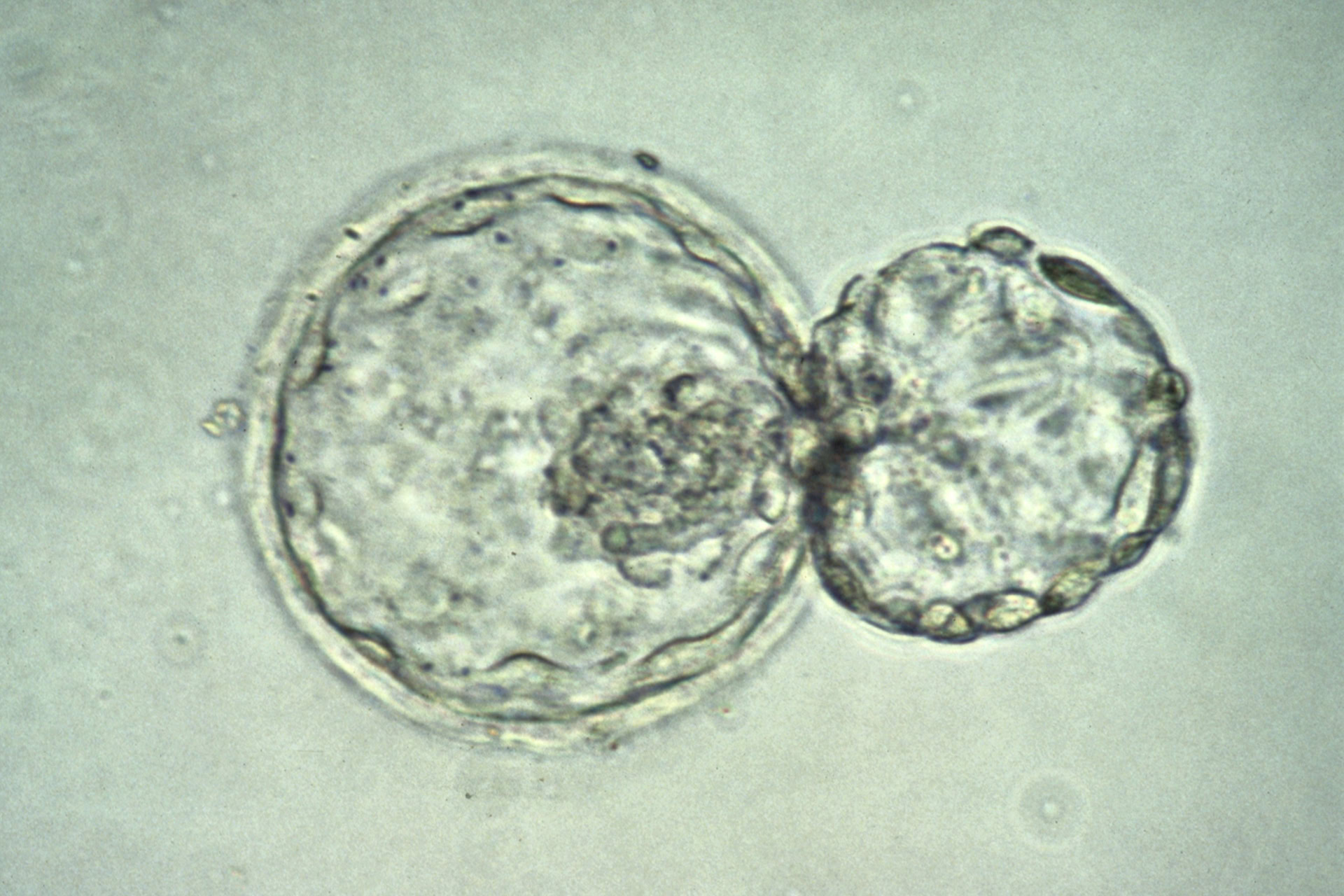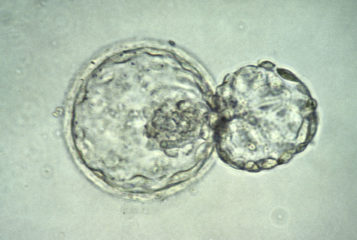Scientists at the University of Newcastle are developing a technique that they hope will enable women with a group of devastating hereditary illnesses - known as mitochondrial diseases - to have children without passing on their genetic disorders. Because the method involves sperm from one man and two eggs from different women it has been dubbed by the press as the creation of 'three-parent' embryos.
Mitochondria are tiny structures that provide cells with energy. Every cell in the body has between 1000 and 10,000 mitochondria. Whilst the vast majority of a cell's DNA is contained inside its nucleus, a handful of genes are found in the mitochondria - just 37 genes out of around 25,000 genes in total. Mutations in mitochondrial genes cause a range of disorders that affect one person in every 6,500 and include fatal liver failure, stroke-like episodes, blindness, deafness, diabetes and forms of epilepsy and muscular dystrophy. Sperm do not contribute any mitochondria to the embryo (as they are all present within the tail, which falls off after fertilisation) and, consequently, children inherit all their mitochondrial genes from their mother.
The Newcastle researchers are working on a technique that takes the DNA from the nucleus of a newly-fertilised egg, and transplants it into an egg from another woman which has had all of its nuclear DNA removed. The resulting embryo would have mitochondria from one woman, but its remaining 25,000 or so genes would come from the mother and father who provided the fertilised egg. In this way, a mother could have a child without passing on her faulty mitochondrial genes.
The work is as yet unpublished, but at a recent scientific meeting of the researchers reported successful transplants in ten embryos, which were then grown in the laboratory for five days before they were destroyed. However, all these experiments were done by exchanging DNA between two 'failed' embryos left-over from IVF, which have abnormal amounts of nuclear DNA and so are inappropriate for implantation. It is not yet known if the technique will work with healthy embryos and eggs, although experiments in mice have been successful. Team leader Professor Patrick Chinnery said: 'there are still a number of scientific issues we've got to resolve, in terms of efficiency, and in terms of whether we can do this in eggs rather than in other embryos'.
Sources and References
-
Three-parent embryo formed in lab
-
Transplant creates embryos with three parents
-
Q&A: three-parent embryos
-
A step towards three-parent babies?






Leave a Reply
You must be logged in to post a comment.